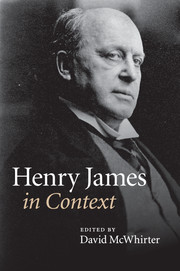Book contents
- Frontmatter
- Contents
- List of Illustrations
- Notes on Contributors
- Preface
- Abbreviations
- Chronology
- Part One Life and career, times and places
- Part Two Historical and cultural contexts
- Chapter 9 Aestheticism and Decadence
- Chapter 10 Authorship
- Chapter 11 Children
- Chapter 12 Consumer culture
- Chapter 13 Cosmopolitanism
- Chapter 14 Courtship, marriage, family
- Chapter 15 Ethics
- Chapter 16 Language
- Chapter 17 Law
- Chapter 18 Manners
- Chapter 19 Media and communication technologies
- Chapter 20 Modernism
- Chapter 21 Money and class
- Chapter 22 Museums and exhibitions
- Chapter 23 Nationalism and imperialism
- Chapter 24 Print culture
- Chapter 25 Psychology
- Chapter 26 Race
- Chapter 27 Realism and naturalism
- Chapter 28 Sexualities and sexology
- Chapter 29 Social sciences and the disciplines
- Chapter 30 Things
- Chapter 31 Time
- Chapter 32 Travel and tourism
- Chapter 33 Urbanity
- Chapter 34 Visual culture
- Chapter 35 Women and men
- Chapter 36 Work
- Part Three Reception
- Further reading
- Index
- References
Chapter 17 - Law
Published online by Cambridge University Press: 05 August 2014
- Frontmatter
- Contents
- List of Illustrations
- Notes on Contributors
- Preface
- Abbreviations
- Chronology
- Part One Life and career, times and places
- Part Two Historical and cultural contexts
- Chapter 9 Aestheticism and Decadence
- Chapter 10 Authorship
- Chapter 11 Children
- Chapter 12 Consumer culture
- Chapter 13 Cosmopolitanism
- Chapter 14 Courtship, marriage, family
- Chapter 15 Ethics
- Chapter 16 Language
- Chapter 17 Law
- Chapter 18 Manners
- Chapter 19 Media and communication technologies
- Chapter 20 Modernism
- Chapter 21 Money and class
- Chapter 22 Museums and exhibitions
- Chapter 23 Nationalism and imperialism
- Chapter 24 Print culture
- Chapter 25 Psychology
- Chapter 26 Race
- Chapter 27 Realism and naturalism
- Chapter 28 Sexualities and sexology
- Chapter 29 Social sciences and the disciplines
- Chapter 30 Things
- Chapter 31 Time
- Chapter 32 Travel and tourism
- Chapter 33 Urbanity
- Chapter 34 Visual culture
- Chapter 35 Women and men
- Chapter 36 Work
- Part Three Reception
- Further reading
- Index
- References
Summary
In 1861, as the Civil War began, Henry James enrolled in Harvard’s law school. His tenure there was brief and by all accounts undistinguished; he left after one academic year to devote himself exclusively to a literary career. Perhaps the future novelist was only looking for an excuse to avoid enlisting in Lincoln’s army, or perhaps he was captivated by the portrait of the American lawyer that Alexis de Tocqueville had sketched out in Democracy in America (1835). According to Tocqueville, the legal profession represented ‘a sort of privileged intellectual class’ whose commitment to precedent and procedure provided a ‘potent barrier’ against the levelling and redistributive tendencies of democratic legislatures. Lawyers and judges not only protected the interests of private property, but also defended individual freedoms and cultural distinctions from a society too enthusiastically committed to ‘equality’, mediocrity and conformity. Throughout his career James would engage in a cultural criticism of democratic tastes and values reminiscent of that of Tocqueville, but his fiction shows little interest in legal institutions and their workings. Yet, at the centre of James’s plots are just those interpersonal relations – making promises, conveying property, taking responsibility for the consequences of one’s action – that were at the centre of debates about the changing nature and function of civil law in modern society.
- Type
- Chapter
- Information
- Henry James in Context , pp. 180 - 191Publisher: Cambridge University PressPrint publication year: 2010

